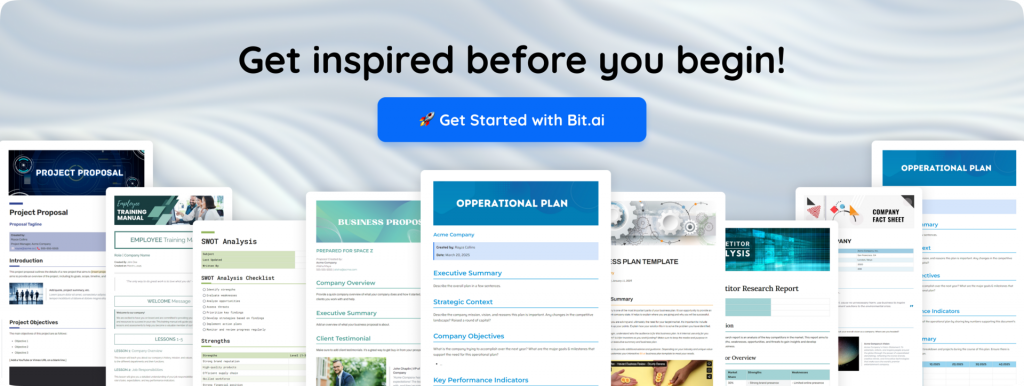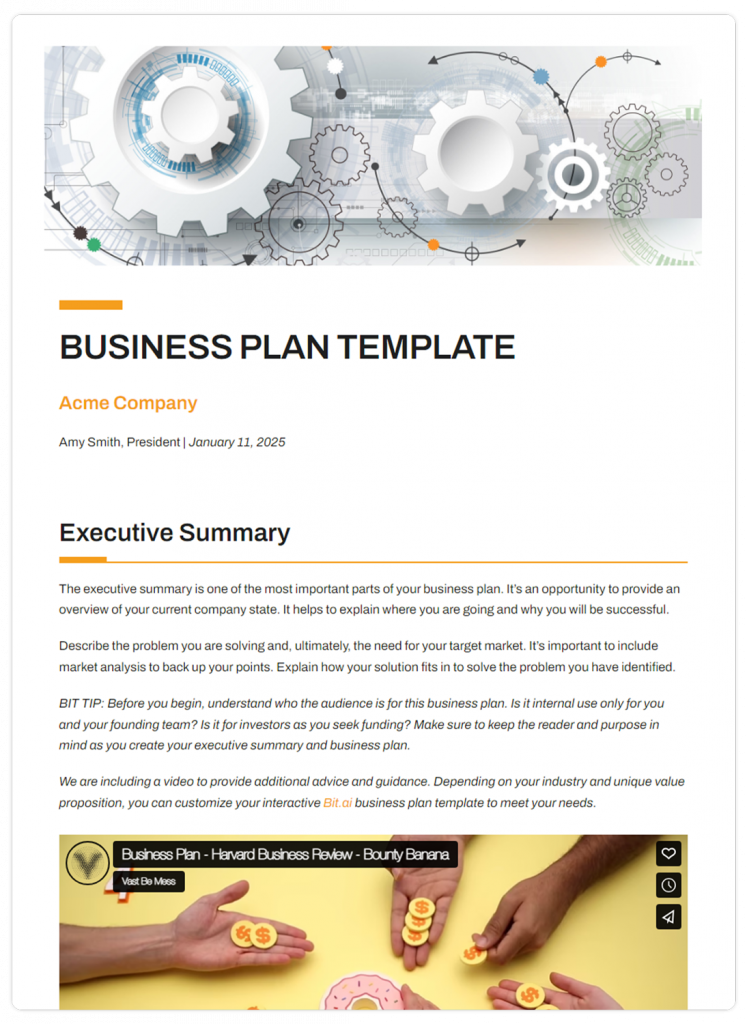Crafting a strong business description can feel tricky—how do you capture your brand’s essence in just a few lines? Yet, brand description plays a big role in shaping how people perceive your brand. It’s often the first thing people see on your website, social media bios, business plan, or event materials—and it can shape the first impression of your brand.
Your business description should go beyond your mission statement. It should tell the story of who you are, what you do, and why it matters—all in a clear, concise way.
In this guide, we’ll walk you through everything you need to know about business descriptions: what they are, why they’re essential, how to write them, and real examples to inspire your own.
What is a Business Description?
Okay, let’s break it down in super simple terms for you.
A business description (also known as a company description) is a concise summary that outlines your company’s identity, goals, products or services, structure, and strategy. It’s like a quick introduction to who you are and why your business exists.
The business description is typically placed in the introduction of a business plan, immediately following the executive summary. This is a key part that an investor, a partner, or a lender would go through, trying to determine your vision and how their business might succeed through your company.
To be brief, the business description provides answers to the following:
Who are you? What do you do? Who do you serve? How are you different from competitors?
Now, let’s break down the components of a business description.
Key Components of a Strong Business Description
A well-written business description should give readers a quick yet complete snapshot of your company. Here are the core elements that a business description should include:
1. Name of company and location
Tell people your business name and location in a clear way, be it a physical store, a regional branch, or an online company. You can add relevant details like the city, state, or country that can help readers understand your geographical presence and market reach.
Adding your location not only shows where you operate but also helps people connect your brand to a particular region or culture. And if your business is online, mention where your operations are managed from to establish trust.
2. Company Overview
Write in your own words what your business does: in a clear, succinct style. Which products or services do you sell? What business are you in? What is your problem?
Keep this section short but meaningful. Avoid jargon and explain in simple terms so that even someone outside your industry can easily understand.
3. Business Goals
Set out short-term and long-term goals. Do you want to achieve rapid growth, conquer new markets, or release new products? Make achievable and quantifiable objectives. When writing goals, focus on measurable outcomes like revenue targets, market expansion, or customer base growth. Investors especially like to see goals backed by timelines and clear action plans.
4. Mission Statement
Clearly describe the main idea of your company. The value, vision, and commitment that your company has towards its customers or community should be seen in your mission statement. A strong mission statement should inspire confidence and show the bigger picture of why your company exists. So, keep it brief, memorable, and aligned with your company’s long-term purpose.
5. Ownership and Legal Structure
Explain what type of business it is- sole proprietorship, partnership, limited liability company (LLC), or a corporation. Including this information clarifies how your business is managed and governed, which is especially useful for investors or collaborators. This section also shows who is accountable and who holds decision-making power in your company. It helps stakeholders know the chain of command and how responsibilities are divided.
6. Business History (where necessary)
Provide a brief background of the business, including when you started, key milestones, and major achievements that have shaped your journey so far. Sharing your business history builds credibility and shows how your company has grown, evolved, and overcome challenges.
If you are a new business, you can share the inspiration behind your startup journey or the story of how your idea came to life. This personal touch makes your description more relatable and authentic.
So, do you also want to write a business description of your brand? Read on.
Quick Add-On 📌 Once your business description is ready, take the next step—turn it into a winning proposal with a Business Proposal Template
How to Craft Business Description in Easy Steps?
Writing a business description might sound daunting, but it’s a crucial step in presenting your business in the best possible light. Your business description is like a window into your company, showing potential investors and customers what you’re all about. In this guide, we’ll break down the process into simple steps anyone can follow.
Step 1: Research the Industry and Competition
Before you start writing, gather information about the industry you’re entering and your competitors. You can find valuable insights from news sources, trade magazines, studies, and experienced individuals in the field. Understanding the industry’s current and future trends will help you create a relevant and compelling description.
Also, you need to check how competitors present themselves. This helps you identify gaps you can fill and opportunities to stand out in the market. Doing this groundwork will make your description sharper and more convincing.
Step 2: Describe the Basics
Introduce your business by providing essential information such as your business name, location, structure, management, and number of employees. This gives readers a clear starting point to understand what your business is all about.
Step 3: Craft a Problem Statement
Identify a common problem your target audience faces and explain how your products or services will solve it. Highlight the benefits and unique features that set your brand apart from competitors.
This step shows that your business has a clear purpose. A strong problem statement makes readers feel you understand their needs and are offering a practical solution, which immediately builds trust and interest.
Step 4: Identify Your Target Market
Describe your ideal customers’ age, location, values, income, and preferences. Understand their needs and tailor your description to resonate with them. Being specific to your audience helps readers see that you know exactly who you’re serving. When your description speaks directly to the right audience, it becomes easier to attract investors, partners, and customers who align with your vision.
Step 5: Explain Your Plans for Manufacturing and Distribution
Detail how your products or services will be made and delivered to customers. If you have a team in mind, list employees, suppliers, and vendors involved. You don’t have to go too deep into technical details, but show that you have a realistic plan in place. This reassures readers that your business idea isn’t just on paper—it’s backed by a system to reach the market successfully.
Step 6: Detail Your Business’s Profitability
Explain how your business will generate revenue and the key indicators you’ll use to measure success. This shows potential investors that your business is not just a concept but a viable opportunity. You can add numbers, estimates, or revenue models if possible to strengthen your case.
Now, let’s look at an example of how everything comes together in practice for writing a professional business description.
Example of Business Description
Let’s look at some real business description examples you can refer to. Seeing how different companies describe themselves will give you a clearer idea of the structure, tone, and details that make a description stand out. Through them, you will know how to emphasize your mission, values, and strengths in a manner that resonates with your audience and creates a good first impression.
A Bakery Business Description Sample:
SugarBloom Bakery is a cupcake bakery and event cake shop based in Chicago, IL. Our bakery was launched in 2019; we mix the old and the new by combining ancient recipes and new flavors. We aim to bring happiness in each bite and to be the preferred choice of bakery to get high-quality desserts in the area.
Company Description Format:
– Business Name
– Business Location
– Type of Business
– Products/Services Offered
– Target Audience
– Unique Selling Proposition (USP)
– Business Model
– Mission & Vision
– Future Goals
With a clear business description in place, the next step is to ensure that your team can create, manage, and share all your important documents efficiently. That’s where a smart documentation platform like Bit.ai comes in. Let’s explore more about Bit.ai.
Bit.ai: The Smartest Documentation Platform for Your Business
When it comes to writing a professional business description, the right tool can make the process faster, smarter, and more effective. That’s where Bit.ai comes in.
Bit.ai is an AI-powered docs, wikis, and knowledge management platform that helps modern teams create, manage, and share business documents with ease. Whether you’re drafting your business description, a full business plan, or collaborating with your team, Bit.ai makes the experience seamless and professional.
Key Features of Bit.ai:
✔️ Smart Documents
Bit.ai lets you build documents that go beyond plain text. You can embed videos, charts, images, or even live content from over a hundred different tools. Instead of boring text-based files, your documents become visually rich, interactive, and more engaging for readers.
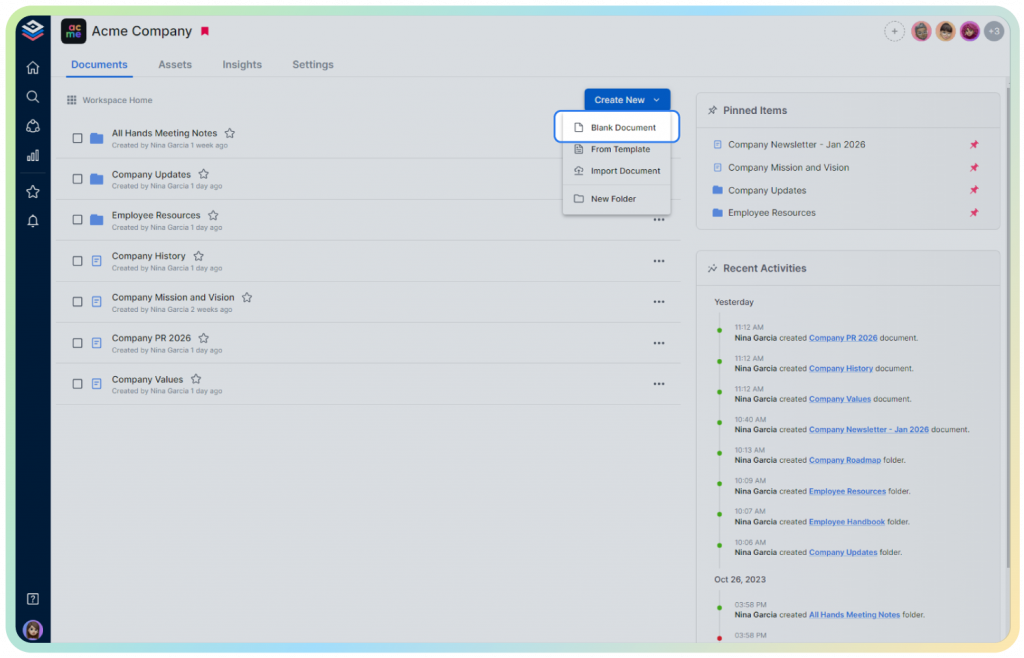
✔️ AI Genius Writer
Generate, refine, or reframe content instantly with the AI Genius writer. Whether you need help drafting an introduction, simplifying complex information, or improving tone and style, the AI Genius Writer acts like your smart writing partner.
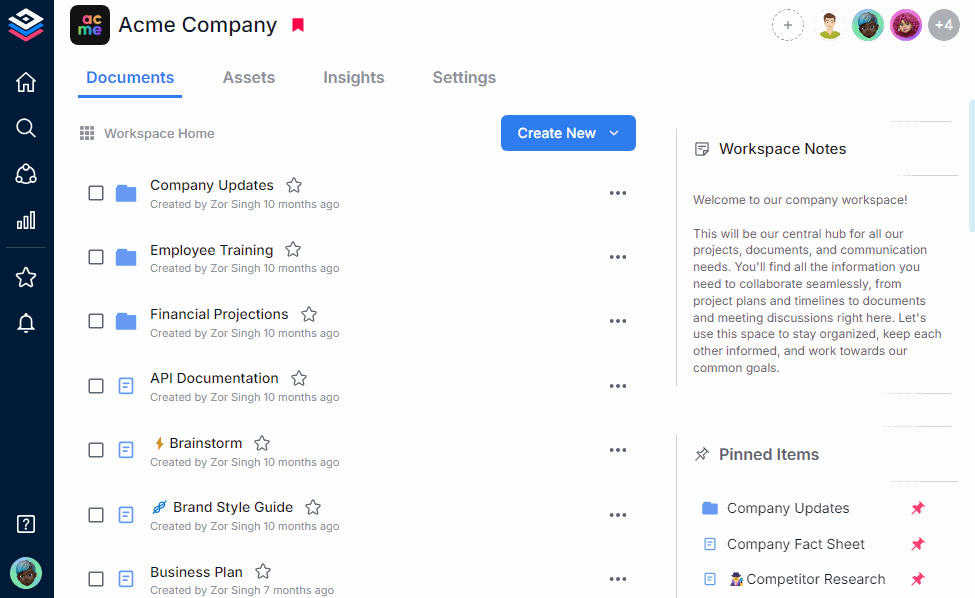
✔️ Real-time Collaboration
No need to deal with endless email threads. With Bit.ai, you and your team can edit, comment, and update documents together—at the same time. Bit allows everyone to stay aligned, which makes teamwork faster and more transparent, especially for remote teams working across time zones.
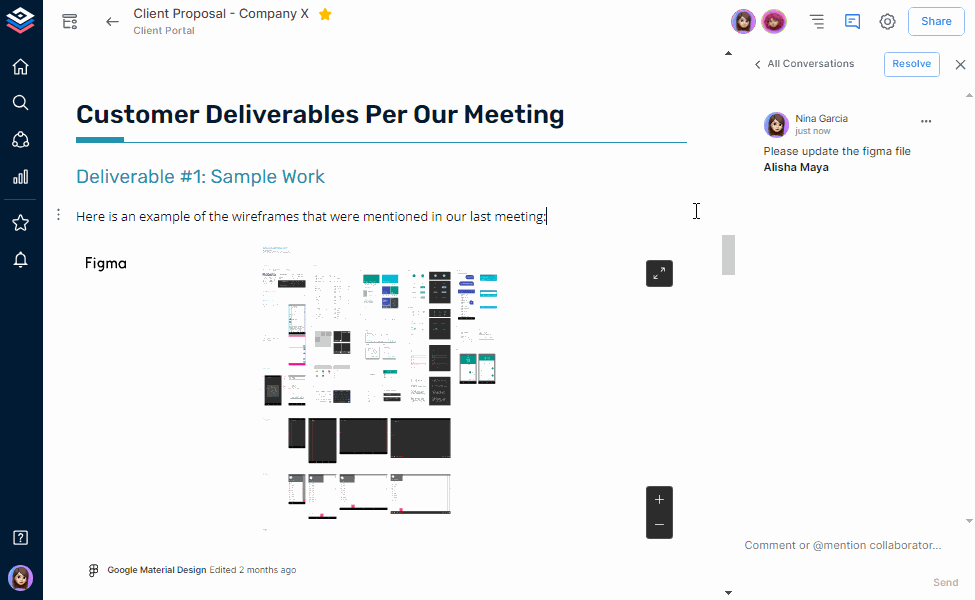
✔️ Professional Templates
Get a head start with Bit.ai’s wide range of pre-designed templates. From business plans and reports to proposals, templates give you a ready-made structure you can customize in minutes. This eliminates guesswork and helps you create professional documents even if you’re starting from scratch.
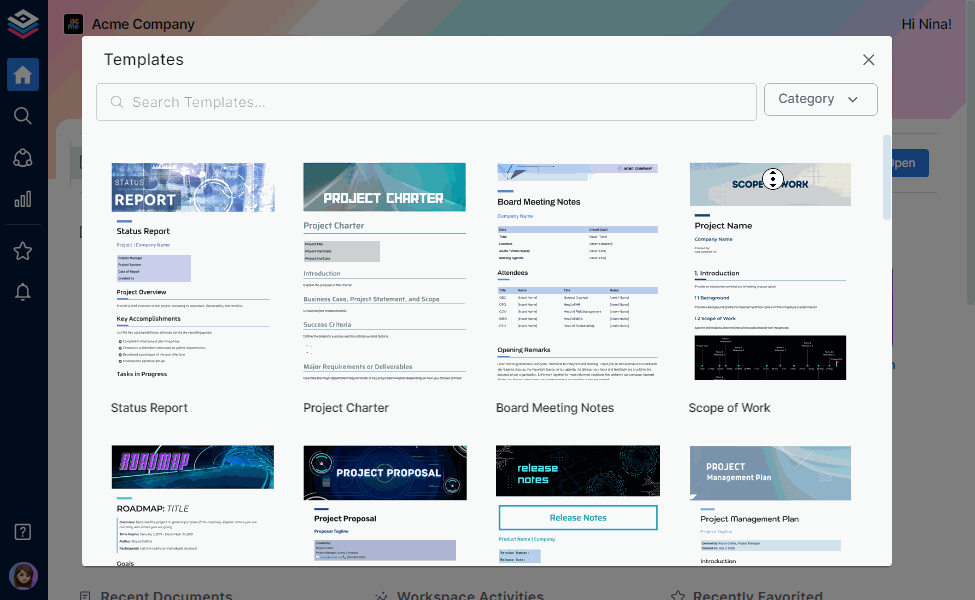
🚀 Ready to simplify your business documentation? Bit.ai makes creating, collaborating, and sharing easy and efficient.
✔️ Content Organization with Workspaces
Keep all your documents structured, searchable, and easy to access. Bit.ai allows you to organize content into workspaces and folders so nothing gets lost. The built-in search function makes finding any document quick and effortless, saving hours of wasted time.
💸 Pricing Plans: Free plan & paid plan start at $12/user/month
If you’re looking for a smarter way to create documents that stand out—whether for investors, clients, or internal projects—Bit.ai is a must-have tool to work faster and look more professional. Ready to dive in? Let’s explore their business plan template to see how it works in action.
Wrapping Up!
An effective business description is not merely a ritual, but a business tactic that inspires trust among investors and lenders, defines your plan and focus, unites team members with common goals, and acts as a guiding business brand, operations, and future.
Simply put, it establishes the tone of all that follows and serves as your elevator pitch in writing, clear, concise, and convincing enough to make a lasting impact. In addition to presenting your company, it also assists you in being unique in the competitive markets, conveying your vision with assertiveness and a feeling of credibility that is easily linked with both the customers and partners.
The stronger and more thoughtful your description, the easier it becomes to connect with stakeholders, attract opportunities, and guide your business toward long-term success.
FAQs
Q1. What can be found as a business description?
A business description example is: “TechMate Inc. is a SaaS startup that provides inventory automation for small businesses.” It comprises the name of the company, what it proposes, who it is targeted at, and its value pitch. Besides, more detailed examples can be found in the section above.
Q2. What is the procedure for writing a business description in a business plan?
Begin by explaining your goods or services, location, type of business, and industry. Thereafter, you add your mission declaration, market, objectives, and organization. Write it using simple terms and in small segments that are easily read.
Q3. Is it a business description or a company description?
Well, yes, these terms are usually used interchangeably. They are a part of your business plan, which makes its readers realize what your company is, who manages it, and what is so special about it.
Q4. What is the location of the business description in the business plan?
The executive summary is normally followed by the business description. It is the second part of a business plan and preconditions the presentation of your detailed plans.
Q5. What is a successful business description?
An effective business description is specific, concise, and educative, and in line with your brand tone. It can show what your business is about, what you are striving to achieve, your target market, and your uniqueness, all sending a confident note to the sharing potential. investors or partners
Keep Reading & Learning 📚



